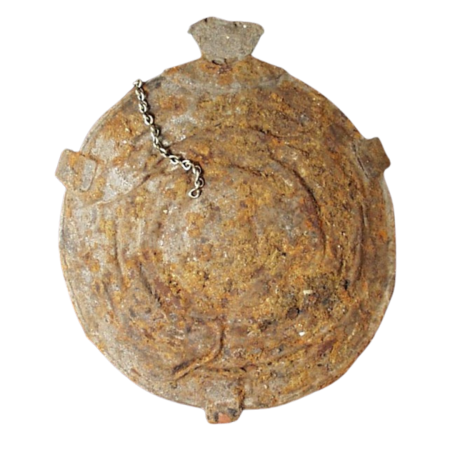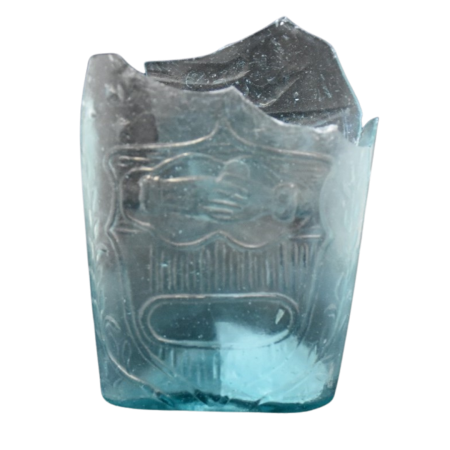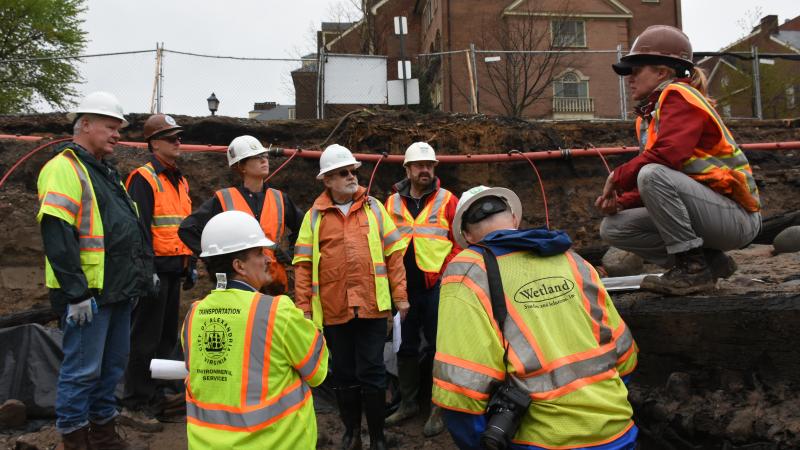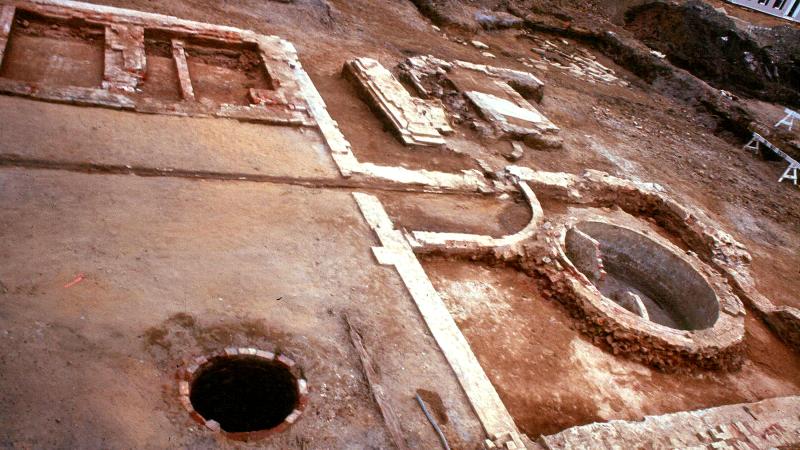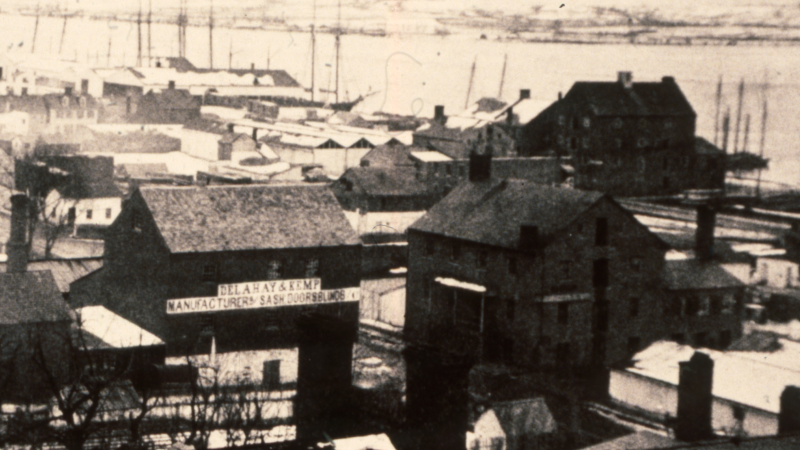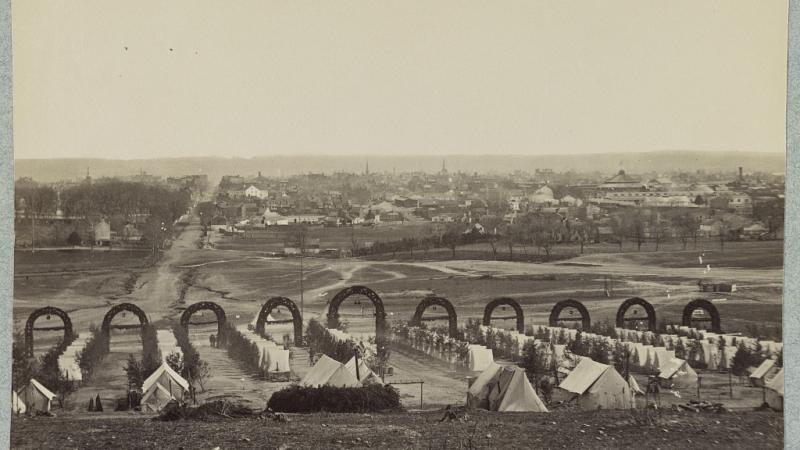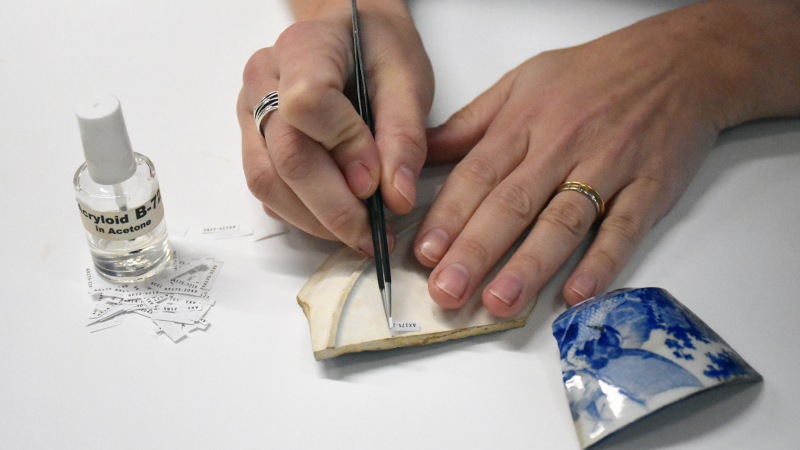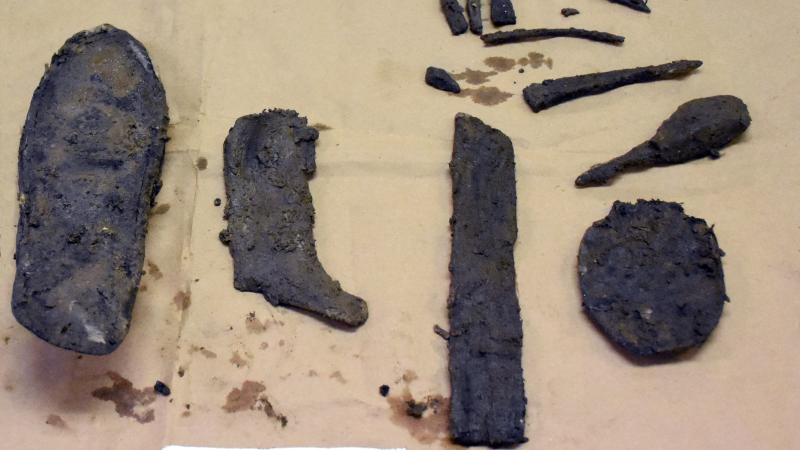The Lee Street Site: Conserving Fragile Artifacts
A Community Digs its Past: The Lee Street Site
The Lee Street exhibit reveals the archaeological process and the history of Alexandria as seen through the lens of the Lee Street Site (archaeological site 44AX180) and several other waterfront sites.
Preserved on the Lee Street Site was a cross-section of Alexandria's history from its founding in 1749 into the 20th century. Eighteenth-century wharves remained intact below remnants of a bakery, taverns, and residences that had sprung up on the bustling waterfront. The block was later used by the Union Army as a hospital support facility for the huge influx of soldiers during the Civil War. These layers of time were preserved under shallow foundations and a paved parking lot. The exhibit weaves together the story of the wharves, taverns, bakery and Civil War privy excavated at the corner of Lee and Queen Streets with the step-by-step process of archaeology from research and excavation to lab work and conservation.
Conserving Fragile Artifacts
Conservators triage history, caring for every artifact.
Conservators and archaeologists must work quickly to slow the decay of fragile materials like metal, leather, and wood once they are out of the ground. These materials need physical and chemical treatment to preserve them.
A lack of oxygen in waterlogged features like privies and wells prevents organic artifacts from breaking down. This wet soil preserves objects that typically do not survive.
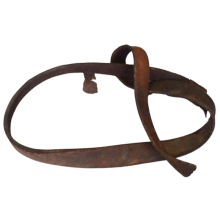
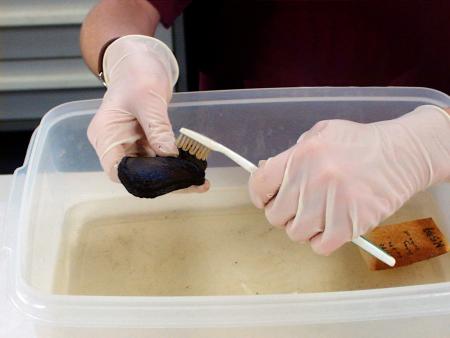
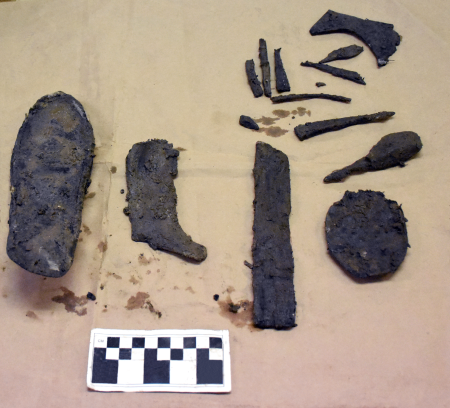
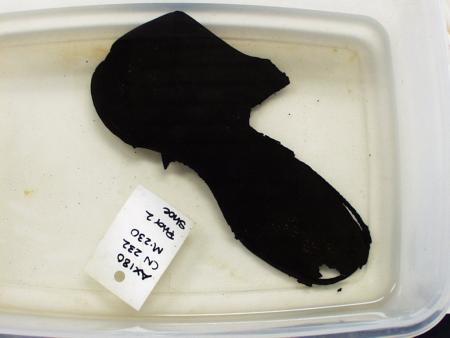
Waterlogged leather objects from the Lee Street Site were cleaned by hand and desalinated to remove damaging salts. The water was replaced by polyethylene glycol (PEG) and then the leather was freeze dried to remove any remaining water. PEG is used in household products like lotions and soaps. It is a waxy material that takes the place of water and does not evaporate, preventing wood and leather objects from shrinking and cracking.
Artifacts are photographed before conservation to document their condition. Some artifacts, like these shoes, are also illustrated to show fine details that would not be seen in a photograph.

Privy Preservation
Leather objects remained wet while buried in the Lee Street Site privy for more than 130 years. Once excavated, a sample of this preserved leather was conserved.
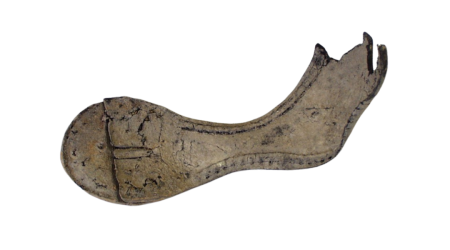
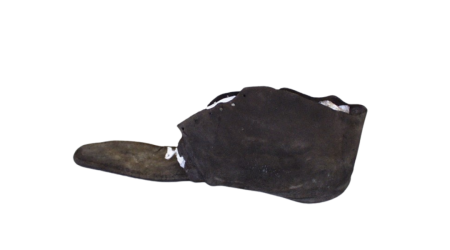
Call the experts!
A conservation team treated and preserved a wide variety of wood, leather, metal, and synthetic materials like rubber from the Lee Street Site. These objects all came out of the same wet soil of a privy.
How are the artifacts conserved?
The type of material and the environment it was found in determines the methods used to conserve each object. Follow three types of artifacts on their conservation journey.
Object: Fire bucket
A faded, red label on the fire bucket identified it as made by the Gutta Percha Company.
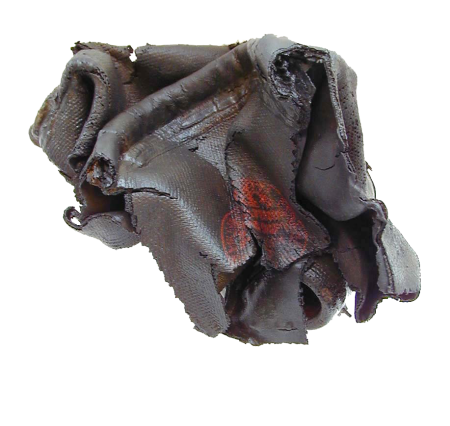
Material Type: Gutta Percha (rubber)
This rubber is made from the sap of a Malaysian plant, known as gutta percha. Starting in the early 1850s, it was used to make hard rubber objects like buttons and combs, and rubberized canvas for tarps, tents, and fire buckets.
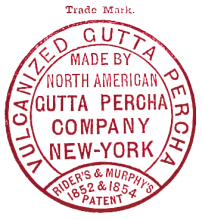
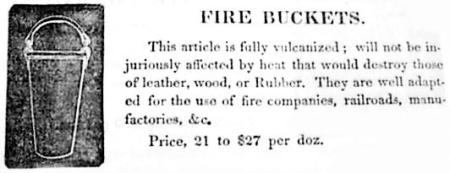
Condition: Brittle
Conservation: The artifact was gently brushed to clean it before desalinating. It is stored in an anoxic (low oxygen) and low-light environment. The fire bucket is too fragile to be exhibited.
Object: Water keg top
Small water kegs were used on ambulances during the Civil War.

Material type: White oak (wood)
Condition: Waterlogged, traces of paint can still be seen.
Conservation: This wood was treated by slowly replacing the water in the object with PEG and then freeze drying the artifact to remove any remaining water. This procedure stabilized the keg top while retaining its shape and preventing cracking.
Object: Buttons, key, ring, buckle, lamp, and bodkin
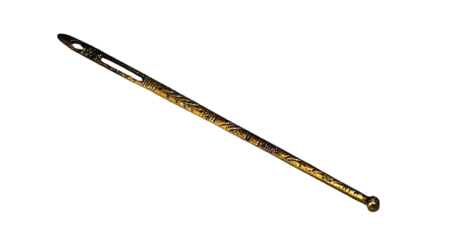
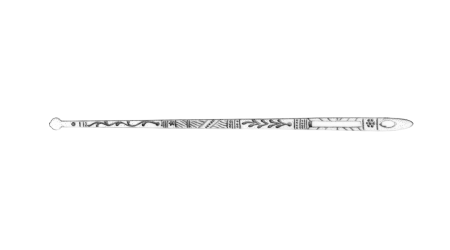
Material type: Copper alloy (metal)
Condition: Corroded
The wet environment of the privy covered the copper and brass artifacts with a layer of black sulfide and copper carbonate corrosion. The sulfide corrosion preserved the shiny surface of the metal beneath.
Conservation: The objects were cleaned mechanically, chemically stabilized, and coated with resin.
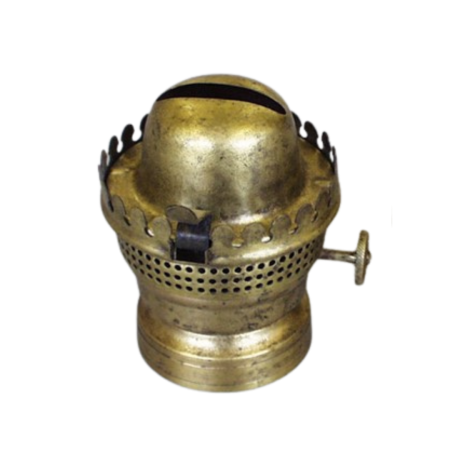

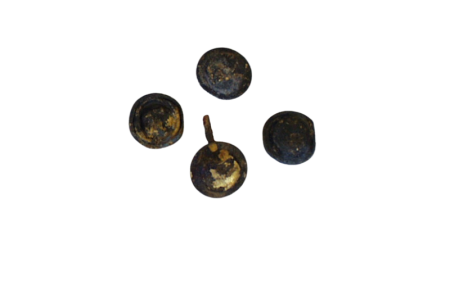
Conserving Lee Street Site artifacts
These artifacts were found in the Lee Street Site privy. The conservator used air abrasion to remove corrosion from the canteen and tin cup. This process involves using an instrument that forces out a fine powder, in a delicate version of sandblasting. They then applied a corrosion inhibitor. For the glass flask, the conservator consolidated the flaking surface, desalinated it, dehydrated it using acetone and water, and then coated it with resin.
